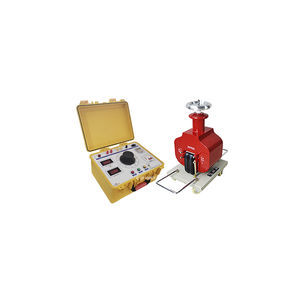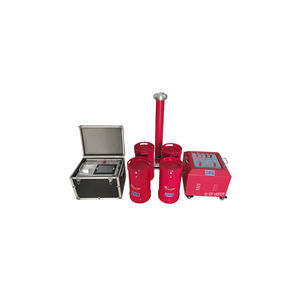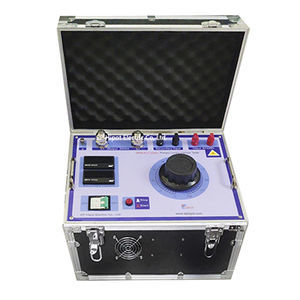
- Metrology - Laboratory
- Metrology and Test Equipment
- AC tester
- EP HIPOT ELECTRIC CO., LTD.
- Products
- Catalogs
- News & Trends
- Exhibitions
AC tester EPVLF-30kVVLFHipotcable





Add to favorites
Compare this product
Characteristics
- Test type
- AC, Hipot, VLF
- Tested product
- cable, motor, for transformers, for electrical equipment
Description
VLF stands for Very Low Frequency. VLF is generally considered to be 0.1 Hz and lower, its major application is for testing solid dielectric cable, transformers, motors, generators, switchgear, and other electrical apparatus.
A VLF hipot is just an AC output tester but with an output frequency of 0.1 Hz or lower rather than 50/60Hz. Although the frequency is very low, it is still an alternating current with polarity reversals every half cycle. At 0.1 Hz output, rather than 60Hz, it takes 600 times less current and power to apply an AC voltage to a capacitive load, like a long cable.
Feature:
-Adapts microprocessor controlled, can realize voltage set-up/down, measuring and protecting automatically. Manual intervention is allowable even during the auto voltage boosting.
-Touch screen, large LCD can display waveform clearly, and test report can be printed. Built-in printer
-Multiple protections (overvoltage protection, overcurrent protection at HV/LV sides). When the output is beyond the limitation, the control unit will shut itself down within 10ms.
Easy operation: simple wiring and operation.
-Safe and reliable: the controller and the high-voltage generator are connected at low voltage, photoelectrically controlled, safe and reliable to use.
-Closed-loop negative feedback circuit is adopted. No capacity rising during outputting.
-Large test range: 0.1Hz, 0.05Hz and 0.02Hz multi-frequency selection, large test range.
-Portable design, small size and light weight: it is very convenient for outdoor operation.
VIDEO
Other EP HIPOT ELECTRIC CO., LTD. products
High voltage insulation testing
Related Searches
- Measuring device
- Test stand
- Measuring machine
- Portable testing system
- Automatic test stand
- Digital tester
- Digital measuring device
- Automatic test equipment
- Voltage testing system
- Industrial testing system
- Automatic testing system
- Manual test kit
- Cabling tester
- Insulation tester
- Automatic measuring machine
- Viscosity measurement device
- Portable test kit
- Test set
- USB tester
- Industrial test equipment
*Prices are pre-tax. They exclude delivery charges and customs duties and do not include additional charges for installation or activation options. Prices are indicative only and may vary by country, with changes to the cost of raw materials and exchange rates.





